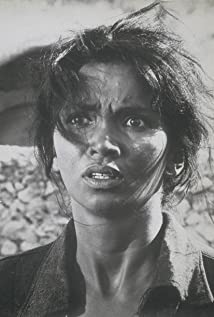If you remember those sword and sandal spectacles that became the rage of Italian cinema during the late 1950s and early 1960s, then you will certainly recall this torrid brunet bombshell. Invariably cast as the ambitiously evil queen or undulating dancer/temptress whose soul mission was to entrance the film's hero, Chelo Alonso's "p...
Show more »
If you remember those sword and sandal spectacles that became the rage of Italian cinema during the late 1950s and early 1960s, then you will certainly recall this torrid brunet bombshell. Invariably cast as the ambitiously evil queen or undulating dancer/temptress whose soul mission was to entrance the film's hero, Chelo Alonso's "peplum princess" prime would be surprisingly brief but her memorable moves and over-the-top histrionics were reason enough to place her on the international sex symbol pedestal and earn her cult status. While her acting contributions would certainly attract no awards, she did earn the honor of becoming "Italian Cinema's Female Discovery" early in the game.The darkly stunning Alonso was born Isabel Apolonia García Hernández in Central Lugareño, Camagüey, Cuba, on April 10, 1933, to a Cuban father and Mexican mother. Attracted to dancing, she began performing seriously in Havana at age 17, and soon earned notoriety at Cuba's National Theatre for her sensual, exotic style. She took her trade to Paris in 1957 and became the toast of the Folies Bergère as an up-and-coming Josephine Baker. Billed as the "Cuban H-Bomb", she combined her native Afro-Cuban rhythms with a seductive belly-dancing style that encouraged wolf whistles wherever she toured, which would eventually include Puerto Rico, Haiti and even the United States.It wasn't long before she slithered her way into Neopolitan action films. Bodybuilder Steve Reeves had just muscled his way into films with his mythological hero Hercules and a new genre was born, with the exotic Chelo soon proving herself a fiery fit. She first attracted attention with the film Sous le signe de Rome (1959) [Sign of the Gladiator] where her erotically-charged dance segment stole the thunder right from under the movie's top-billed sex star, Swedish siren Anita Ekberg.From there Chelo, with her volcanic temperament, highly distinctive cheekbones and wild mane of dark hair, went on to charm a number of "ab"normally fit muscleman co-stars, including Reeves, Gordon Mitchell and Mark Forest in such obviously-titled adventure films as La vengeance du Sarrasin (1959); La terreur des barbares (1959); Le géant de la vallée des rois (1960); La terreur du masque rouge (1960); La reine des barbares (1960); and Capitaine Morgan (1960). Following her filming of Quattro notti con Alba (1962), which was produced by Aldo Pomilia.She had already met Pomilia in 1960 while both were working on the "Morgan the Pirate" production. They married a year later and she bore him son Aldino in 1962. While visiting Aldo in Spain, where he was the production supervisor of Clint Eastwood's star-making western Le Bon, la brute, le truand (1966), she made a brief uncredited mute cameo. Pomilia then executive-produced her an auspicious comeback, playing opposite her countryman, Havana-born Tomas Milian in the cult western Saludos, hombre (1968), as Dolores, which is arguably the best film role of her career. Chelo then made a brief appearance in a variation of that previous role, also called Dolores, in another cult western, the bizarre Un tueur nommé Luke (1969), after which she abandoned the film scene and focused on Italian TV.After the death of her husband in 1986, Alonso moved to Tuscany, Italy, where she found several interests to keep her busy, including breeding cats and operating a hotel/restaurant. She died at age 85 in Italy in 2019.
Show less «



